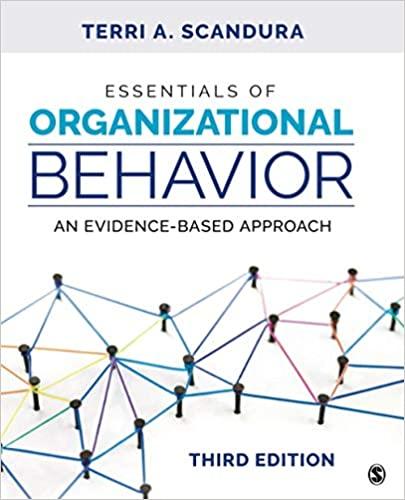Sports teams represent a unique place for the effects of cohesion to take hold due to their
Question:
Sports teams represent a unique place for the effects of cohesion to take hold due to their well-defined structures, tasks, and roles.68 A review of the relationship between cohesiveness and team performance concluded that in 83% of the studies, team cohesiveness was significantly and positively related to team performance.69 Research on sports psychology has examined the relationship between coaching style and team cohesion. When coaches engage in training, being democratic, being supportive, and giving feedback, team cohesion is higher.70 An in-depth interview study of male and female athletes in college sports plus a case study of a Division I college football team was conducted to determine the effects of coaching styles on team cohesion.71 This study found that using abusive language, treating the relationship as a superior or subordinate one, being unfair, lacking communication, and ridiculing players all related to lower team cohesion. Motivational coaching (being inspirational, having a personal relationship with athletes, showing support, and having dedication) was related to higher team cohesion. A case study of a football team indicated that players felt that bragging about the abilities of their teammates, talking about the quality of their opponent, giving motivational speeches, and conducting a team prayer increased feelings of team cohesion. This was confirmed by a review study72 examining coaching style and team cohesion that included 288 effects from 24 studies that used the same sports leadership scale. This was the Leadership Scale for Sport (LSS) and is composed of five leadership dimensions for a coach’s behaviors: (1) training and instruction, which emphasizes athletes’ development of skills, tactics, and physical performance; (2) democratic, which focuses on motivating athletes to make decisions on their goals, training objectives, and game strategies; (3) autocratic, which focuses on authority and independent decision-making; (4) social support, which emphasizes interpersonal relationships with athletes outside of practice; and (5) positive feedback, which focuses on rewarding and praising athletes for outstanding performance. Overall, a moderate relationship was found between leadership and cohesion, and a major relationship was found between leadership and satisfaction, with training being the highest contributor for both. The gender composition of the athletic teams was also important. When coaches displayed a high frequency of positive behavior, teams composed of females or coed teams showed an increase in players’ satisfaction; however, this effect was not as strong for teams composed of only male athletes. It is important to recognize the influence of leadership behaviors on team cohesion, especially as sports evolve to be more competitive. This interesting research on coaching shows that being inspirational and developing the skills of your followers will likely enhance your team’s cohesion....
Discussion Questions
1. To what extent can these findings for sports teams be applied to teams at work? What are the limitations of using sports examples?
2. In these studies, training, being democratic, showing support, and giving feedback were important in developing team cohesion. Which do you think is most important and why?
3. Based on the review, why do you think that coaches’ positive behaviors were more important for the satisfaction of female and coed teams but not for male teams?
Step by Step Answer:

Essentials Of Organizational Behavior An Evidence-Based Approach
ISBN: 9781544396781
3rd Edition
Authors: Terri A. Scandura





